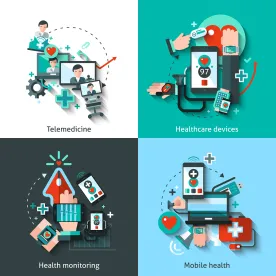On November 16, 2017, the Food and Drug Administration (“FDA” or the “Agency”) will hold a public hearing on a proposed approach for sponsors seeking to market devices referencing drugs (“DRDs”) when the drug sponsor does not wish to collaborate with the sponsor of the device. FDA will accept comments to the docket until January 15, 2018.
As defined by FDA, a DRD is a device (i) proposing new uses with an approved, marketed drug, and (ii) the new use is not included in the drug’s labeling, and the drug sponsor will not seek to change the labeling. FDA envisions that this could occur in various scenarios, including to “enhance the safety or effectiveness” of a drug for its already approved indication, use of the device with the approved drug for an indication that is not approved for the drug, or to provide some other benefit, “such as increasing user comfort or convenience.” Generally this would involve a change in how the drug is administered, such as dose, route, or rate of administration changes.
In the public hearing notice, FDA proposes to review and approve a DRD through the device premarket authorization (“PMA”) pathway. FDA notes that “a PMA would generally be the appropriate device marketing application because, e.g., DRDs are expected to represent a new intended use or raise different questions of safety or effectiveness as compared to a legally marketed predicate device.” (emphasis added) FDA states that the PMA approach may be appropriate for drug delivery systems seeking to be labeled with an approved drug for an unapproved indication. FDA intends to consider through the public meeting and accompanying comments “whether DRDs may be reviewed through other device premarket authorization pathways” — such as the de novo and 510(k) notification pathways.
FDA proposes in the notice that DRD sponsors would address the following factors in their marketing submissions:
-
Safety and Effectiveness of the New Use of the Drug: The DRD sponsor should provide “substantial evidence” that the drug will have the effect it purports under the conditions of use described in proposed DRD labeling and that the drug is safe for use.
-
User Confusion and Medication Error/Use Error: The DRD sponsor should demonstrate that it has adequately addressed the potential for user error or confusion from differences in labeling between the device and the drug.
-
Postmarket Change Management: The sponsor should demonstrate that it can address safety or effectiveness issues associated with changes to the approved, marketed drug.
-
Postmarket Safety: The sponsor should demonstrate that it has a postmarket safety plan to adequately address adverse events.
-
Data Reliance: The sponsor should provide all information necessary to evaluate safety and effectiveness without relying on proprietary information for the approved drug.
DRDs and Digital Health
The public hearing notice does not specifically discuss digital health technologies. That said, unless the Agency provides other guidance as its policy evolves, FDA’s proposed regulatory approach to DRDs could be read to impact digital health solutions that are regulated as devices and propose new uses for marketed, approved drugs, such as an app that allows patients to control drug injections through their phone. Some digital health sponsors may not notify or seek to collaborate with drug sponsors before providing digital health offerings that propose new uses of a specific drug or a class of drugs. FDA’s potential approach to DRDs, perhaps unintentionally, could sweep in certain digital health offerings that are devices and raise questions about whether these solutions need to be reviewed under the PMA pathway.
In stating that a PMA pathway would “generally” be the appropriate device marketing application for DRDs, FDA left some room to treat digital health offerings differently from other DRDs. A different approach would align with FDA’s Digital Health Innovation Plan announced last summer by Commissioner Gottlieb. FDA’s anticipated digital health guidance documents implementing the recent 21st Century Cures Act could be one avenue to learn more about the Agency’s current thinking, in addition to any Agency policies that flow from the public hearing.
Of note for digital health innovators, FDA’s hearing notice states that CDRH would collaborate with CDER in the review of DRDs and described CDER as the lead on drug-specific issues. Regardless of whether FDA ultimately incorporates digital health offerings into its DRD approach, increased coordination between CDRH and CDER may have a long-term impact on how the Agency coordinates internal review of digital health solutions that reference drugs.





 />i
/>i
